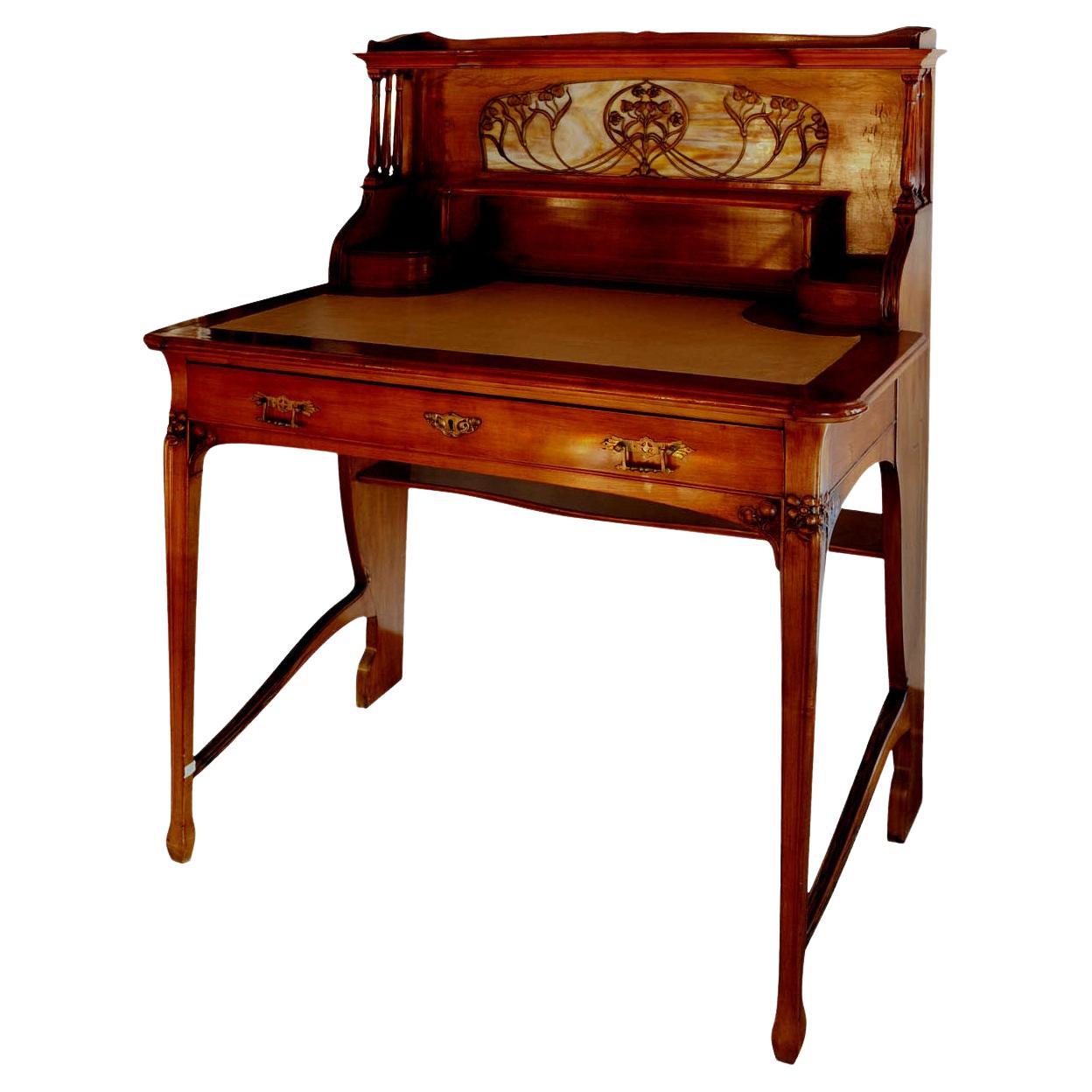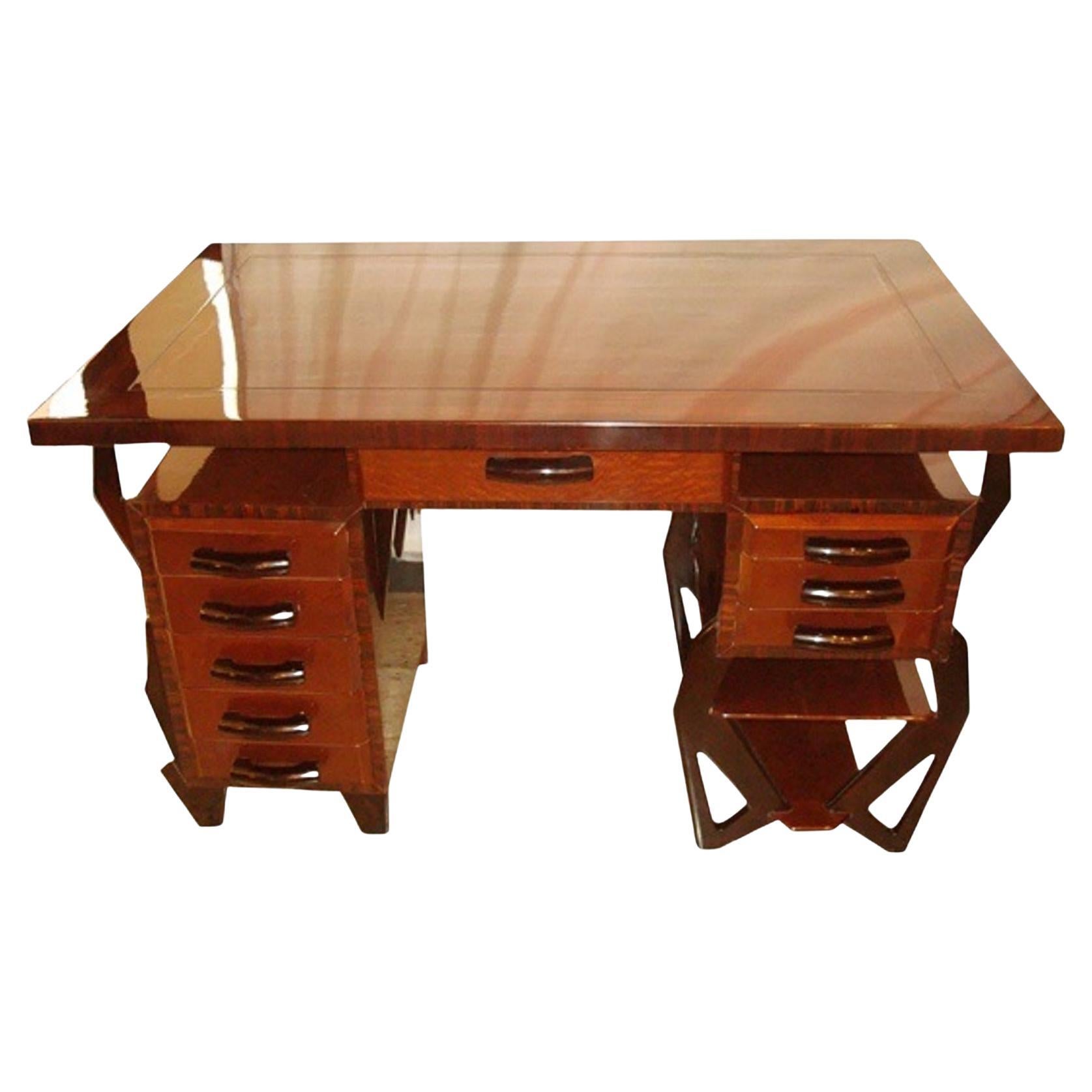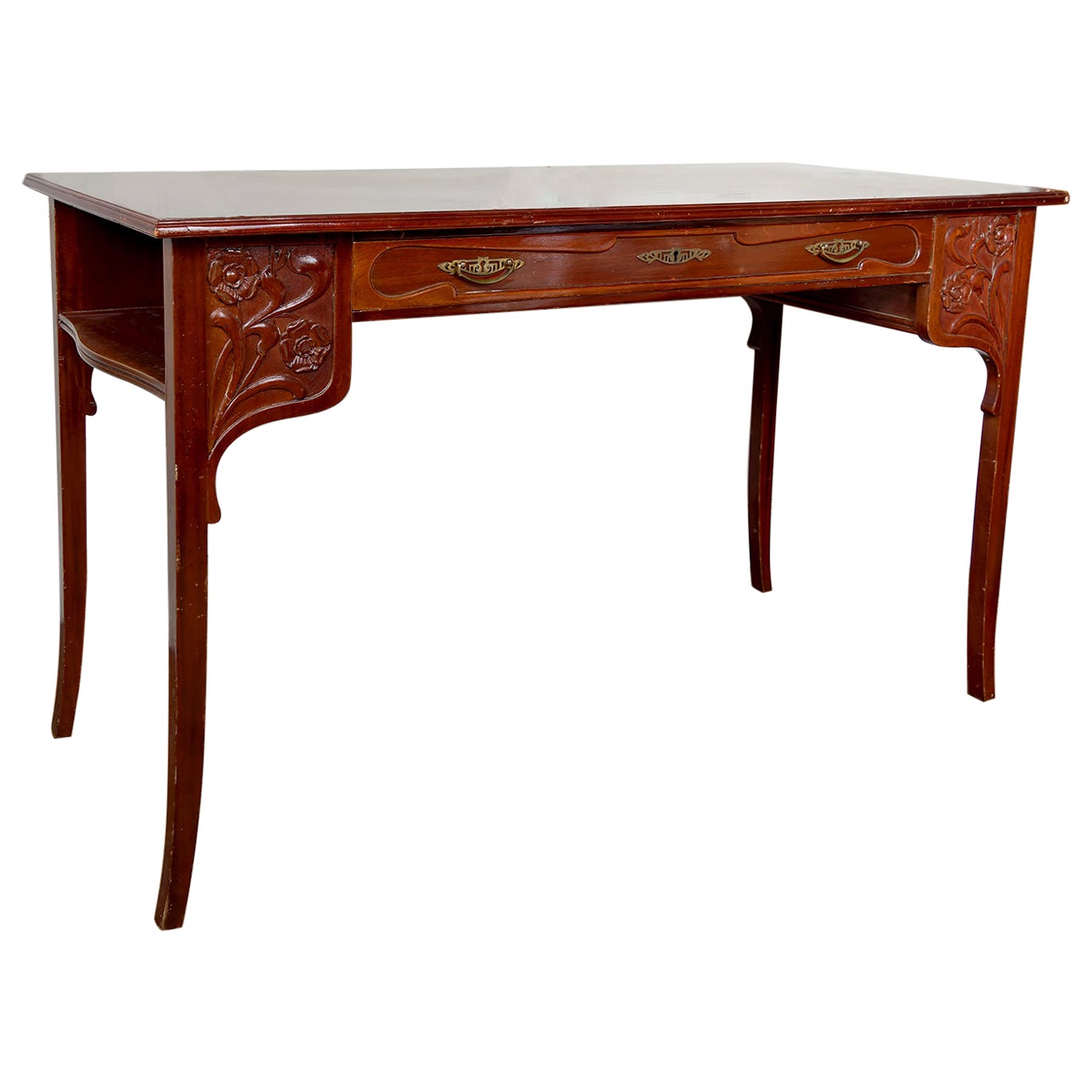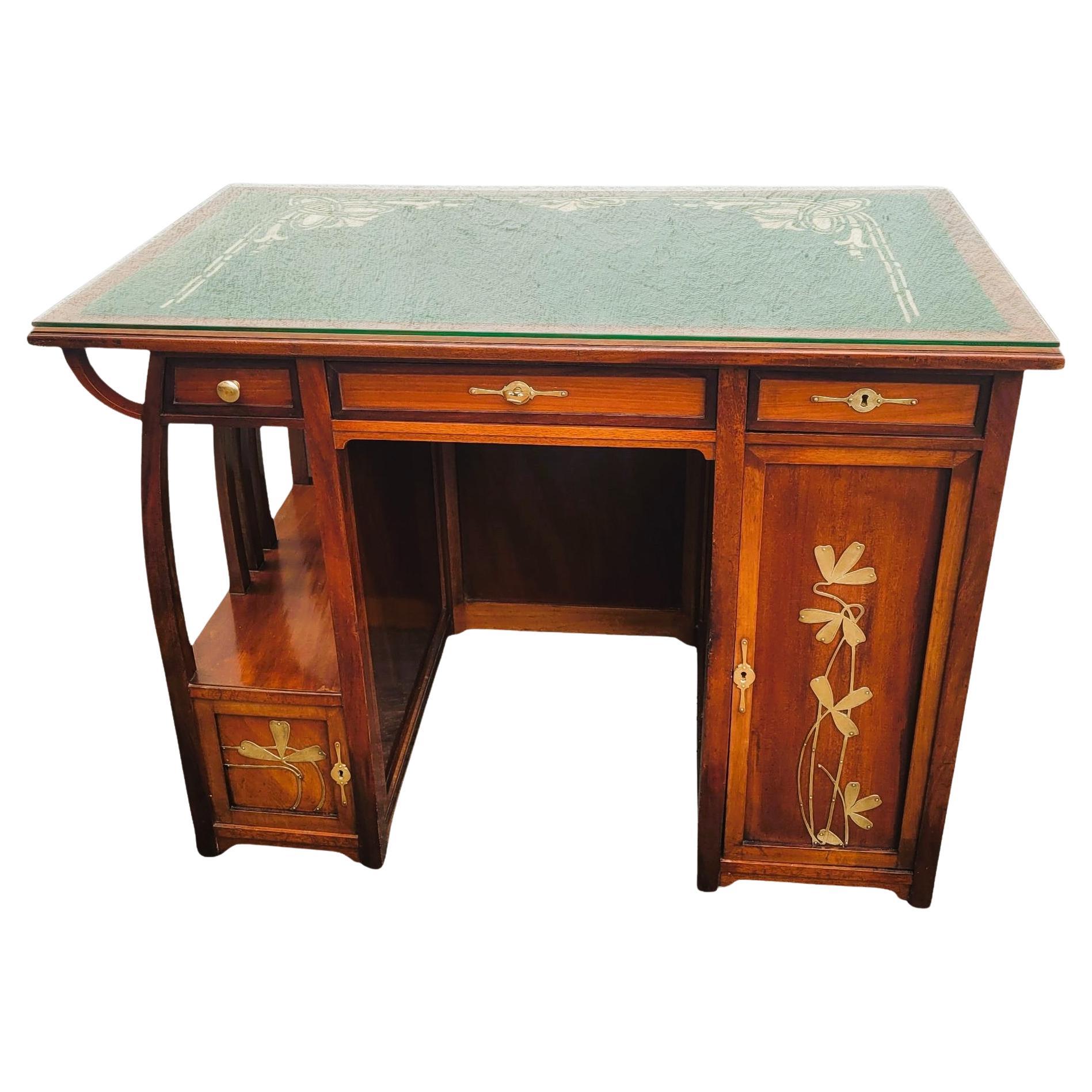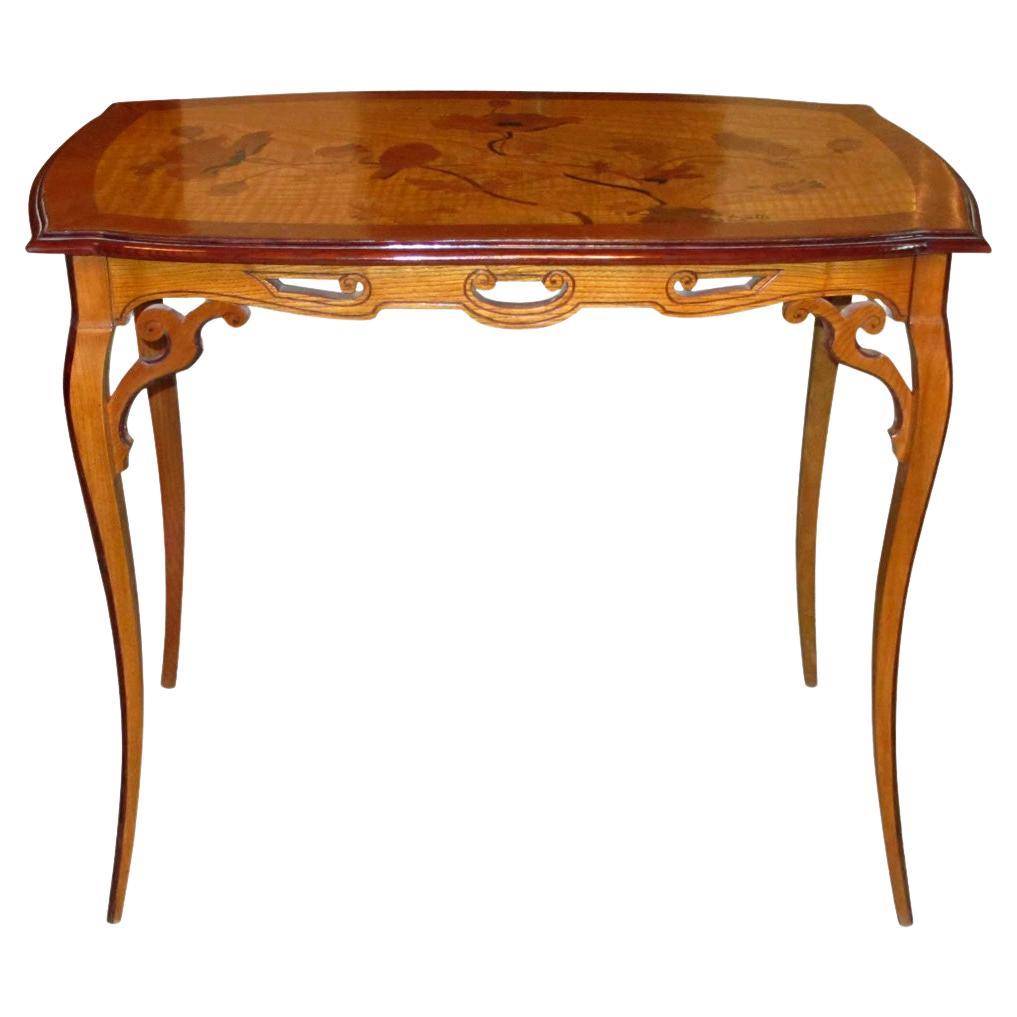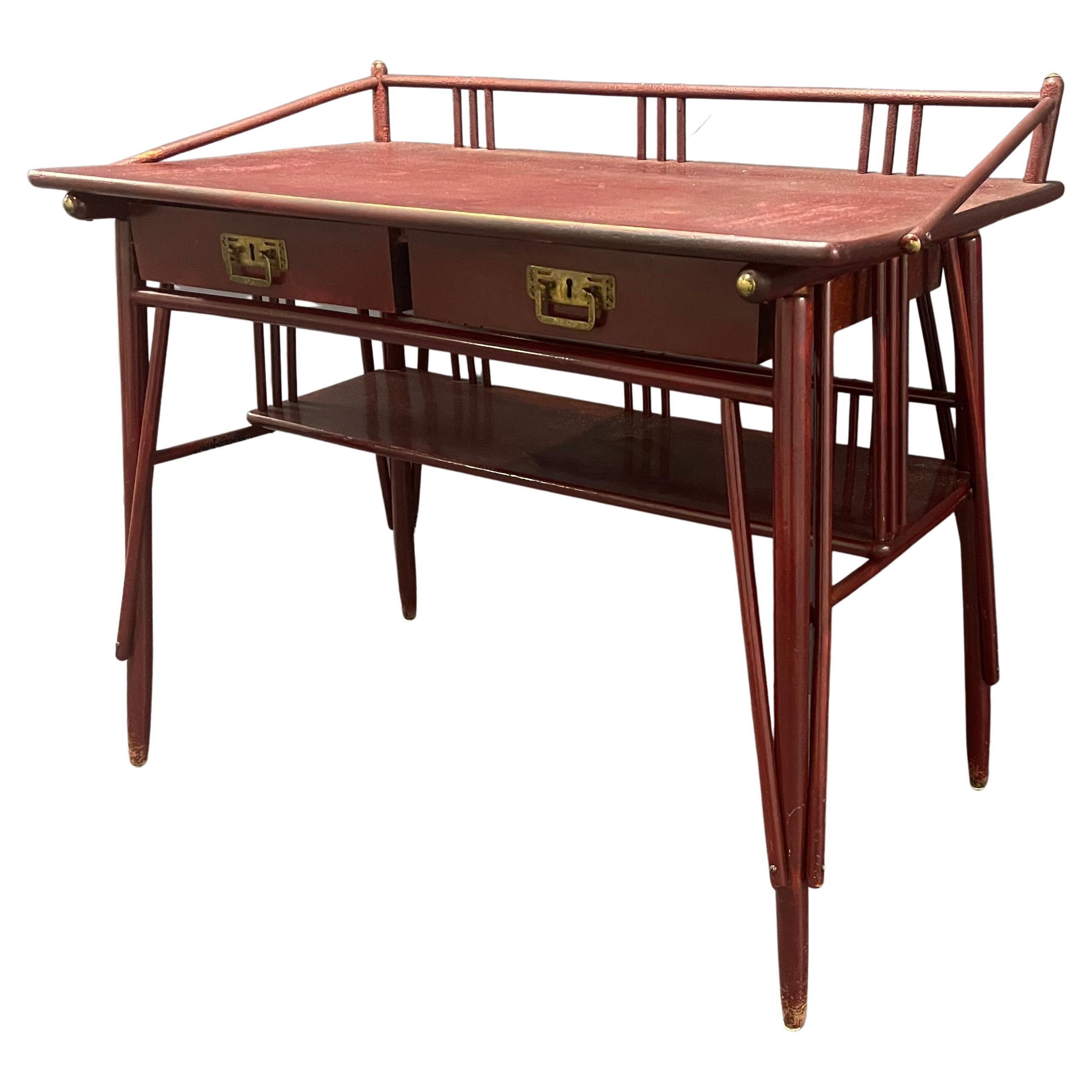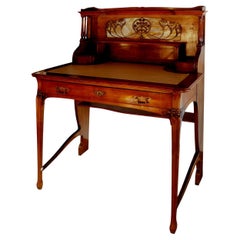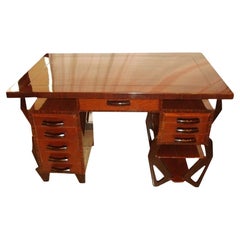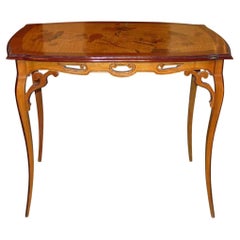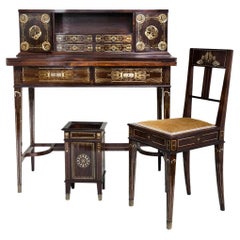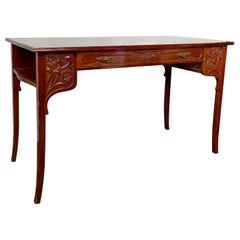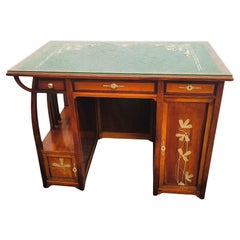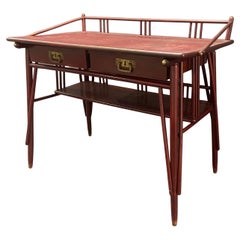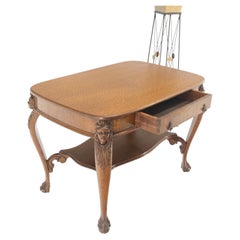Items Similar to Desk Jugendstil, Art Nouveau, Liberty , Sign: G. Keller Orfevre, 22 rue Joubert
Video Loading
Want more images or videos?
Request additional images or videos from the seller
1 of 22
Desk Jugendstil, Art Nouveau, Liberty , Sign: G. Keller Orfevre, 22 rue Joubert
$128,000
£95,806.10
€110,705.09
CA$177,493.32
A$198,815.33
CHF 103,361.87
MX$2,454,969.29
NOK 1,316,748.91
SEK 1,244,781.24
DKK 826,141.90
Shipping
Retrieving quote...The 1stDibs Promise:
Authenticity Guarantee,
Money-Back Guarantee,
24-Hour Cancellation
About the Item
The set includes, armchair, desk and desk accessories. It is from the first era.
Bibliography: Revue de l’Art N°185 – March 2014, p. 23.
Founded in 1857 by Gustave Keller, the Keller house specializes in luxury goods and leather goods, quickly noticed and appreciated, enjoying recognition at world exhibitions. In 1878, his two sons took over the company under the name “Successors of Keller's son and son-in-law” and added table goldsmithing and various objects to their activities.
The production is awarded at the universal exhibitions of 1889 and 1900.
Keller's notoriety is so great that official orders flow in, including the royal courts of Spain, Romania, Greece, Russia and the Principality of Monaco. Tsar Nicholas II of Russia was regularly supplied at the end of the 19th century. Many works are present in different prestigious museums such as Les Arts Décoratifs, Orsay or the Hermitage museum. Established in Paris at 65, rue de Turbigo, the Keller house moved its shop and workshop to 22 rue Joubert in 1891. In 1929, the shop was registered at 18 avenue Matignon. The company will cease its activities around 1947.
Style: Art Nouveau or Modernism or Jugendstil
Year: 1900
Materials :wood.
- Dimensions:Height: 31.5 in (80 cm)Width: 81.11 in (206 cm)Depth: 45.28 in (115 cm)
- Style:Art Nouveau (Of the Period)
- Materials and Techniques:
- Place of Origin:
- Period:
- Date of Manufacture:circa 1900
- Condition:Refinished. Wear consistent with age and use.
- Seller Location:Ciudad Autónoma Buenos Aires, AR
- Reference Number:Seller: F-TO-1stDibs: LU6785240936892
About the Seller
5.0
Vetted Professional Seller
Every seller passes strict standards for authenticity and reliability
Established in 1982
1stDibs seller since 2022
36 sales on 1stDibs
Typical response time: <1 hour
- ShippingRetrieving quote...Shipping from: Ciudad Autónoma Buenos Aires, Argentina
- Return Policy
Authenticity Guarantee
In the unlikely event there’s an issue with an item’s authenticity, contact us within 1 year for a full refund. DetailsMoney-Back Guarantee
If your item is not as described, is damaged in transit, or does not arrive, contact us within 7 days for a full refund. Details24-Hour Cancellation
You have a 24-hour grace period in which to reconsider your purchase, with no questions asked.Vetted Professional Sellers
Our world-class sellers must adhere to strict standards for service and quality, maintaining the integrity of our listings.Price-Match Guarantee
If you find that a seller listed the same item for a lower price elsewhere, we’ll match it.Trusted Global Delivery
Our best-in-class carrier network provides specialized shipping options worldwide, including custom delivery.More From This Seller
View AllDesk Jugendstil, Art Nouveau, Liberty, Attributed Louis Majorelle and Daum Nancy
By Louis Majorelle
Located in Ciudad Autónoma Buenos Aires, C
Desk Attributed Louis Majorelle
Style: Art Nouveau or Modernism or Jugendstil
Year: 1900
Materials : Furniture glass paste, bronze and wood.
Painted flowers
We have specialized in t...
Category
Antique Early 1900s French Art Nouveau Desks and Writing Tables
Materials
Bronze
Desk Jugendstil, Art Nouveau, Liberty , 1900, France, Wood
By Louis Majorelle
Located in Ciudad Autónoma Buenos Aires, C
Desk
Style: Art Nouveau or Modernism or Jugendstil
Year: 1900
Materials :wood.
We have specialized in the sale of Art Deco and Art Nouveau styles since 1982.If you have any question...
Category
Antique Early 1900s French Art Nouveau Desks and Writing Tables
Materials
Wood
Table Jugendstil, Art Nouveau, Liberty , Year: 1900, Signature: Galle
Located in Ciudad Autónoma Buenos Aires, C
Table Jugendstil, Art Nouveau, Liberty
Year: 1900
Country: France
Wood
It is an elegant and sophisticated table.
We have specialized in the sale of Art Deco and Art Nouveau styles ...
Category
Antique Early 1900s French Art Nouveau Center Tables
Materials
Wood
Eugenio Quarti desk, Chair and Trah in Style Liberty or Art Nouveau, Jugestails
By Eugenio Quarti
Located in Ciudad Autónoma Buenos Aires, C
Eugenio Quarti (Desk , chair and Trash )
Style: Liberty or Art Nouveau or Modernism or Jugendstil
Furniture realized mainly in inlays of nacre and metallic applications, parchament
bronze ferrules.
We have specialized in the sale of Art Deco and Art Nouveau styles since 1982.If you have any questions we are at your disposal
Pushing the button that reads 'View All From Seller'. And you can see more objects to the style for sale.
Eugenio Quarti was born in Villa d'Almè, a small village in the province of Bergamo, from an artisan family of woodworkers. In 1881, at the age of 14 years old he goes to Paris, where he will learn new techniques and broaden his horizons. In 1886, he returned to Italy and settled in Milan where he worked, for a short period, with Carlo Bugatti and then open his own workshop in via Donizetti 3.
His early works are strongly marked by Bugatti Moorish’s style, but already the exhibition of Turin of 1898 you can see the first signs of Art Nouveau and his personal style. He was always attentive to the quality and originality of his accomplishments, always attentive to every art form. Furniture realized mainly in walnut with inlays of nacre and metallic applications. Develop over time a harmonic elegance of the decor, with thread-like grounds, valuable wood species and inlays and high quality bezels with fine materials (nacre, silver, copper, bronze, pewter, etc.), this characteristic was called "the goldsmith of furniture makers."
In 1900 he participates at the Paris International exposition where he received the "Grand Prix" of the jury. Will participate in a number of other exposures as that of Turin in 1902 and Milan in 1906 where he will receive the "Grand Royal Award" and the "Diploma of gold medal".
Eugenio Quarti worked with the most prestigious architects of his time (Giuseppe Sommaruga, Luigi Broggi, Alfredo Campanini, etc.) well as with the great artists/craftsmen of his time as Alessandro Mazzucotelli. He also worked as a decorator, designing entire furniture for both public and private buildings. It was he who designed the furniture for Palazzo Castiglioni in Milan, Villa Carosio in Baveno, Grand Hotel and Casino in San Pellegrino Terme, Hungaria Palace Hotel in Venice Lido. One of his most significant works were the vessels of the "Bar Camparino", at the entrance site of the Galleria Vittorio Emanuele in Milan. however not disdain also committed less important such as the furniture for Villa Mariani to Bordighera residence of the painter Pompeo Mariani...
Category
Antique Early 1900s Italian Art Nouveau Desks and Writing Tables
Materials
Bronze
Table Maison L´art Nouveau, Bing Atelier Magasins, Siegfried Bing, Art Nouveau
Located in Ciudad Autónoma Buenos Aires, C
Incredible Art Nouveau table. With the original label, from Siegfried Bing's or Samuel Bing shop.
We have specialized in the sale of Art Deco and Art Nouveau and Vintage styles since 1982. If you have any questions we are at your disposal.
Pushing the button that reads 'View All From Seller'. And you can see more objects to the style for sale.
L'art Nouveau Bing, Atelier Magasins sold many pieces to the Louvre museum.
It was the most revolutionary store of the time.
It was located at 22 rue de Provence, Paris.
If you want a unique Art Nouveau piece, this should be your choice.
We have specialized in the sale of Art Deco and Art Nouveau styles since 1982.If you have any questions we are at your disposal.
Pushing the button that reads 'View All From Seller'. And you can see more objects to the style for sale.
the Maison de l'Art Nouveau ("House of New Art"), abbreviated often as L'Art Nouveau, and known also as Maison Bing for the owner, was a gallery opened on 26 December 1895, by Siegfried Bing at 22 rue de Provence, Paris.
The building was designed by the architect Louis Bonnier (1856–1946).[2] Unlike his earlier stores at the same location and nearby at 19 rue Chauchat that specialized in Japanese and Asian art objects, the gallery specialized in modern art.[1][3] The original exhibition featured windows designed by Nabi artists, including Henri de Toulouse-Lautrec, and made by Louis Comfort Tiffany...
Category
Antique Early 1900s French Art Nouveau Side Tables
Materials
Wood
Desk Art Deco, 1920, France, Materials: Wood and Bronze
Located in Ciudad Autónoma Buenos Aires, C
French Desk Style: Art Deco
Year 1920
Wood and bronze
Finish: polyurethanic lacquer.
It is an elegant and sophisticated dream desk.
The quality of the furniture and the exotic wood...
Category
Vintage 1920s French Art Deco Desks and Writing Tables
Materials
Bronze
You May Also Like
Art Nouveau / Jugendstil Desk, Carved Wood, Germany, Circa 1910
Located in VÉZELAY, FR
Features:
Style: Art Nouveau / Jugendstil
Material: Carved wood
Origin: Germany, circa 1910
Sculptures: Elegant floral carvings
Functionality: A large drawer and two niches / booksh...
Category
Vintage 1910s German Art Nouveau Desks and Writing Tables
Materials
Brass, Bronze
Art Nouveau Desk In Wood With Brass Decoration, Late 19th And Early 20th Century
Located in MARSEILLE, FR
Beautiful Art Nouveau wooden desk with rich floral decoration in brass cut and fixed to the wood.
It opens with 3 drawers and 2 doors, the bigger one contains sliding drawers. ...
Category
Antique Late 19th Century European Art Nouveau Desks and Writing Tables
Materials
Brass
Rare No.49 Art Nouveau Desk from Finland
Located in Munich, DE
wonderful light and elegant desk from finland by suomen tuoli-, kalusto- ja sorvaustehdas. from the area of jyväskylä & muurame. this small and rare desk will be an wonderful additio...
Category
Vintage 1910s Finnish Art Nouveau Desks and Writing Tables
Materials
Brass
Art Nouveau Style Carved Faces Ball & Claw Feet Rounded Oak Desk Writing Table
By J. Horner
Located in Rockaway, NJ
Art Nouveau Style Carved Faces Ball & Claw Feet Rounded Oak Desk Writing Table.
Category
20th Century American Art Nouveau Desks and Writing Tables
Materials
Oak
Early 20th Century Viennese Secession oak writing desk
Located in Prague 8, CZ
This luxurious-looking Art Nouveau writing desk was made in about 1910 in the former Austria-Hungary. It is made of oak wood. The table top is covered with green plush in the front. ...
Category
Early 20th Century Austrian Art Nouveau Desks and Writing Tables
Materials
Metal
$4,975 Sale Price
20% Off
Art Nouveau Mahogany stepped desk
Located in Paris, FR
Elegant stepped desk in mahogany and mahogany veneer. Gilt bronze frame opening with a drawer inlaid with leaf and flower stems. The front features a draw...
Category
Antique 1890s French Art Nouveau Desks and Writing Tables
Materials
Mahogany
